I was supposing be protected. What i can do now? Why Avg sofware did not react?
Files were nominated directly <filename>.pst.vvv
Any chance to decrypt them?
If your files are encrypted by the .vvv extension, you can get help from the guide below.
Details of .VVV Extension
.VVV Extension is a filename extension added by a ransomware called TeslaCrypt. It can encrypt your important personal files such as .doc, .xls, .pdf, .jpg, and .png which will end with a .vvv extension. It is dangerous and worrying to have this kind of encryption in your computer. It will greatly affect your internet experience and even your work.
TeslaCrypt (.VVV Extension) usually comes via spam emails and peer to peer share files. Once inside, it will generate how_recover+ghp.txt and how_recover+ghp.html in every folder on your computer. You are often asked to pay a certain amount of money to have all your files decrypted, which may actually not help you get back your files. Besides, since it will scan your files and encrypt them, it knows your secret information. It may expose your confidential information to risk. If your computer has been infected by this TeslaCrypt (.VVV Extension), you are recommended to remove it as soon as possible to restore your files and prevent other threats.
Guides to Remove .VVV Extension and Restore Encrypted Files
Here are some suggestions on removing .vvv extension and restore encrypted files. Please refer to them to get rid of all the problems.
Method 1: Manually Remove .VVV Extension with Step by Step Instruction
Method 2: Automatically Remove .VVV Extension & Restore Files with SpyHunter
Method 2: Automatically Remove .VVV Extension & Restore Files with SpyHunter
Method 1: Manually Remove .VVV Extension with Step by Step Instruction
Step 1. Restart your computer in Safe mode.
Keep tabbing F8 key before the Windows start-up logo appears until you get to Advanced Options, select Safe Mode, and hit ENTER.
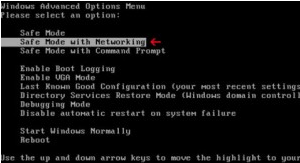
Step 2. End up the trojan processes in Windows Task Manager.
Press Ctrl+Shift+Esc or Ctrl+Alt+Delete to open Windows Task Manager, find malicious processes and click End process.
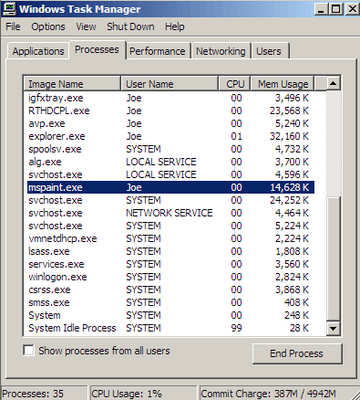
Random.exe
Step 3. Navigate to Registry Editor and clean up all .VVV Extension registry entries.
Press Win+ R key at and same time to open Run Commend Box. Open Registry Editor by typing “regedit” in Runbox and clicking OK.

Look through the registry entries and find out all listed harmful items. Right click on them and terminate the related entries (samples).
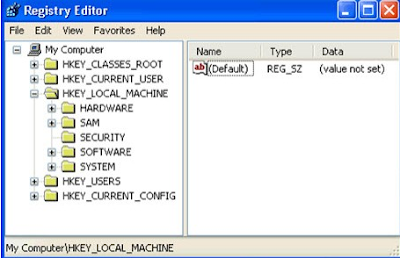
HKEY_CURRENT_USER\Software\Microsoft\Windows\CurrentVersion\Run "<random>" = "%AppData%\<random>.exe"
HKEY_LOCAL_MACHINE\Software\Microsoft\Windows\CurrentVersion\Run "<random>" = "%AppData%\<random>.exe"
HKEY_CURRENT_USER\Software\Microsoft\Windows\CurrentVersion\Policies\Attachments "SaveZoneInformation"=1
HKEY_CURRENT_USER\Software\Microsoft\Windows NT\CurrentVersion\Winlogon "Shell" = "%AppData%\<random>.exe"
HKEY_LOCAL_MACHINE\SOFTWARE\Microsoft\Windows NT\CurrentVersion\Image File Execution Options\msseces.exe "Debugger"="svchost.exe"
HKEY_LOCAL_MACHINE\SOFTWARE\Microsoft\Windows NT\CurrentVersion\Image File Execution Options\MpCmdRun.exe
HKEY_LOCAL_MACHINE\SOFTWARE\Microsoft\Windows NT\CurrentVersion\Image File Execution Options\MpUXSrv.exe
HKEY_LOCAL_MACHINE\SOFTWARE\Microsoft\Windows NT\CurrentVersion\Image File Execution Options\MSASCui.exe
Step 4. Show hidden folders and files.
Windows XP
Start button > Control Panel > Appearance and Personalization > Folder Options > Show Hidden Files or Folders
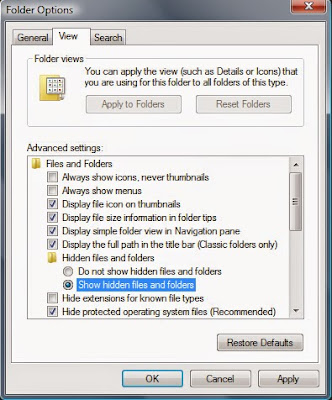
Remove the checkmark from Hide extensions for known file types. And remove the checkmark from Hide protected operating system files (Recommended).
Windows 7 / Vista
Libraries > Folder Options > Tools > Show Hidden Files or Folders

Remove the checkmark from Hide extensions for known file types and Hide protected operating system files (Recommended)
Windows 8 /8.1
Windows Explorer > View > Hidden Items

Delete .VVV Extension associated files (samples).
%UserProfile%\Application Data\Microsoft\[random].exe
%System Root%\Samples
%User Profile%\Local Settings\Temp
%AppData%\<random>.exe
%CommonAppData%\<random>.exe
C:\Windows\Temp\<random>.exe
%temp%\<random>.exe
C:\Program Files\<random>
C:\ProgramData\[random numbers]\
Method 2: Automatically Remove .VVV Extension & Restore Files with SpyHunter
SpyHunter is an adaptive real-time spyware detection and removal tool. It can help you remove .VVV Extension and all the threats in your PC. It will never bundle with any programs and can get along with existing security programs without any conflicts. Please feel relieved about usage.
Click the download button below to get SpyHunter
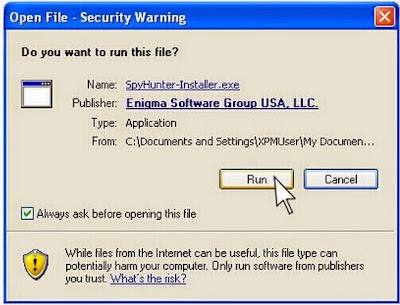
After finishing installing, SpyHunter will scan and diagnose your entire system automatically.

After detecting all the threats in your system, you can click on “Fix Threats” to remove them.
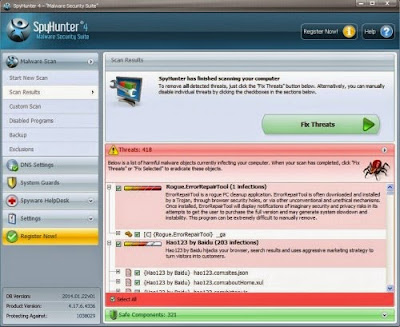
Method 3: Speed up Your PC and Fix Files with RegCure Pro.
You can download and install RegCure Pro to speed up and optimize your PC. It is packed with the tools you need to boost your PC's speed and performance.
- Clean away Windows registry errors
- Eject active viruses, spyware and other malware
- Stop unneeded processes
- Delete startup items
- Delete privacy files
Click the icon to download RegCure Pro.

Click "Yes" to run the profile.
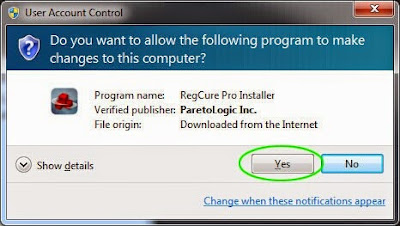
After installation, you can scan your computer for errors by making a system scan.

After scanning, choose the items you want to clean and fix.
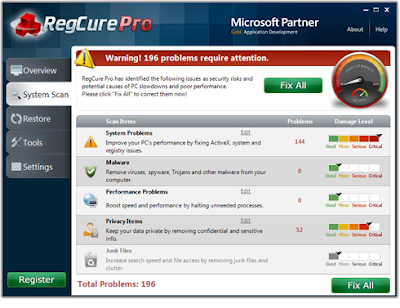
Warm Reminder:
SpyHunter is a powerful anti-malware for inexperience computer user. It can help you remove all the detected threats automatically. So all you need to do is install it for immediate and ongoing protection.

No comments:
Post a Comment